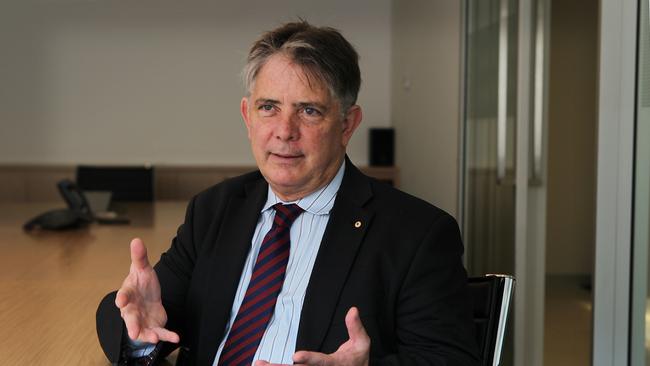Battle brews over Energy Security Board’s plan for reforms to power grid
Major energy reforms proposed for the nation’s power grid have been savaged by renewable investors.

Major energy reforms proposed for the nation’s power grid have been savaged by renewable investors who are worried a plan to pay coal generators to guarantee future capacity will have a “chilling effect” on companies investing in new supply.
The Energy Security Board sent its final advice on the redesign of the electricity market to National Cabinet on Wednesday as it tries to avoid major shocks from the system moving from coal to renewables.
But several big generators immediately railed against several of the reforms including plans for a capacity market. Dispatchable generators such as coal, gas and hydro plants will be paid to guarantee future capacity when the grid is facing periods of peak demand that threaten reliability rather than being paid on an “energy only’’ basis for the power that is used by consumers.
Retailers with bigger clean energy exposure are worried it will simply favour existing thermal generators at their expense.
The ESB’s recommendation “appears unnecessary and costly and may simply entrench revenue streams for incumbent thermal generators beyond their otherwise operational or economic lives, while at the same time deterring new investment in lower cost dispatchable generation,” said Nigel Baker, Tilt Renewables’s executive general manager for generation and trading.
Spanish power giant Iberdrola, which bought Australia’s Infigen Energy last year, said investment could suffer from the proposed changes.
“The ESB has not articulated how this would actually drive investment in the long-term,” Iberdrola Australia chief executive Ross Rolfe said. “Major reforms and market reviews risk a chilling effect on investment, where funders are either unwilling to commit to an uncertain future or require a significant risk premium – increasing costs to consumers. Internationally, capacity markets have not been tested with high penetrations of renewable generation.”
Energy Minister Angus Taylor said the move would be considered among reforms before a final package is sent to National Cabinet for a decision later this year.
“It includes a recommendation that governments further develop a capacity mechanism to provide the right market signals to drive investment in dispatchable generation. This will be crucial to ensuring that we can absorb renewables into the grid without threatening reliability and affordability,” Mr Taylor said.
“The pace and scale of changes underway in our electricity system is unprecedented, and it is essential that the National Electricity Market remains fit for purpose into the future in order to protect consumers from high prices and reliability risks as technologies in the energy sector change.”

A national approach to ensure enough firming generation like gas and pumped hydro is in place also stands to put the Victorian and NSW governments off-side after they ploughed ahead with their own policies to entice new supplies into the grid.
The ESB said it was preparing for ageing coal-fired generation retirement by giving incentives for the right mix of resources to enter the system.
“We have had a very mild summer, and everyone has got very complacent, but we only need one hot summer in three jurisdictions together or a major unexpected outage at a big coal plant and we’ve got a real resource adequacy issue right on top of us,” ESB chair Kerry Schott said.
A plan to open the grid to big renewable projects by focusing on renewable energy zones has also ruffled feathers for suppliers who might be planning projects outside these areas, says energy consultant Stephanie Bashir.
The nature of generation investment is changing, with an increasing number of smaller-scale, decentralised renewable generators looking to connect more often. This makes co-ordination with transmission increasingly difficult. The ESB’s proposed reforms to transmission access will do little to resolve or co-ordinate with transmission investments that are now being dealt with by the states under the Renewable Energy Zones programs,” said Ms Bashir, an ex-AGL Energy director of policy.
Coal, which provides 70 per cent of electricity, will contribute less than a third of supply by 2040 and is now expected to be forced out earlier than end of life dates as competition from renewables and carbon constraints make plants uneconomic.
By 2035 nearly 90 per cent of power demand could be met by renewable generation during periods through the day. However, that will require up to 50GW of large-scale solar and wind to be added under the most aggressive plan to cut emissions, representing nearly all the current capacity of the market to be built in just two decades.
Up to 19GW of firmed dispatchable resources such as gas, pumped hydro and batteries will be required in the next two decades to back up renewables.




To join the conversation, please log in. Don't have an account? Register
Join the conversation, you are commenting as Logout